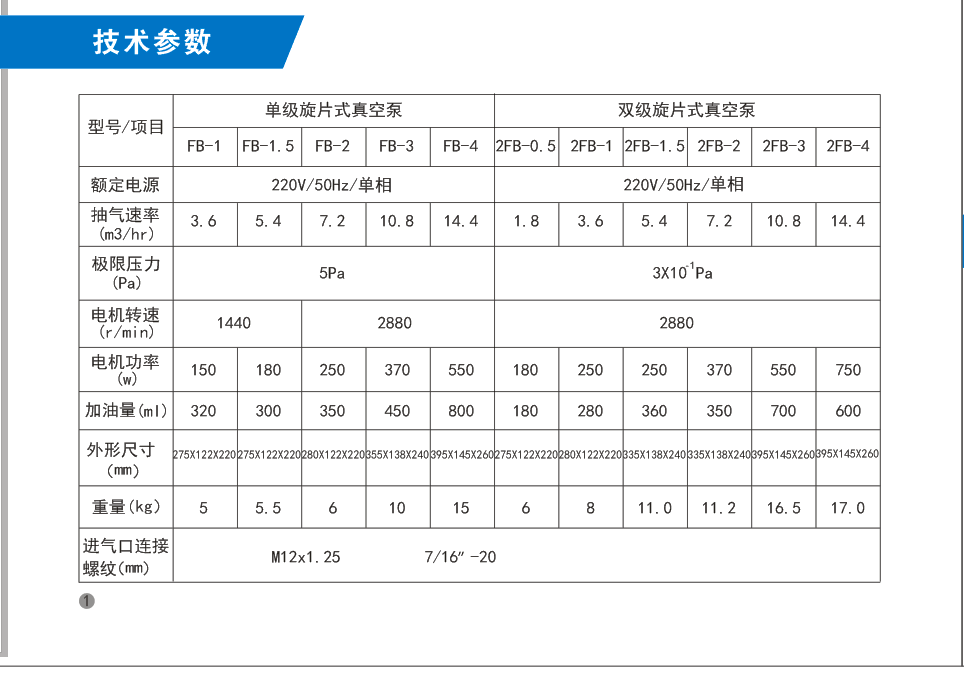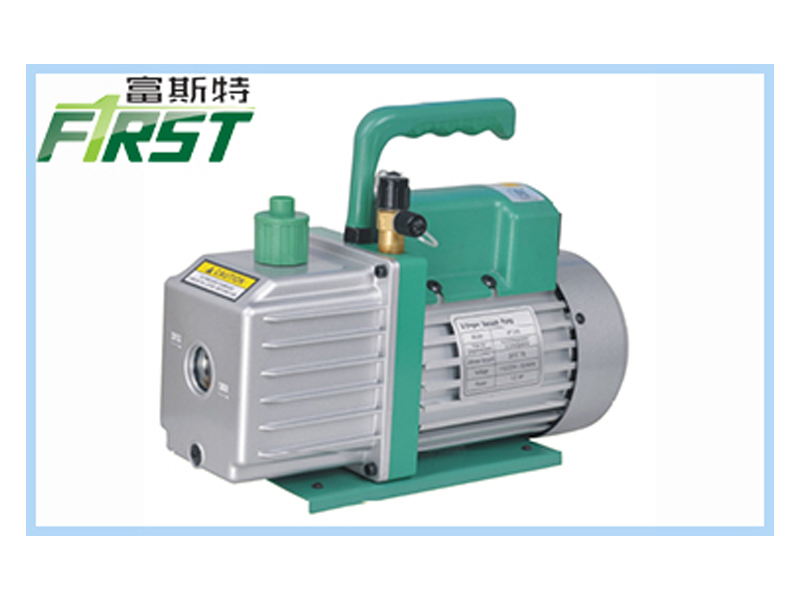The 2FB series dual stage rotary vane vacuum pump is a basic equipment used to extract gas from sealed containers and obtain vacuum oscillation.
It is suitable for refrigeration maintenance (refrigerants include CFC, HCFH and HFC, such as R12/R22/R134a, etc.), printing machinery, Vacuum packing, gas analysis, thermoplastic molding and other industries. It can also be used as the front pump of various high vacuum equipment.
Characteristics
1. Smaller size and lighter weight
Adopting a four/two pole motor design, while ensuring the same pumping rate, the structure is compact - smaller in size, lighter in weight, and more convenient to carry and use.
2. High vacuum and high extraction rate
The design of dual stage rotating blades improves the vacuum degree and extraction rate, reduces the exhaust time of the pump, and ensures the removal of refrigerant water in the system
3. Long term filtration
The intake filter screen can effectively prevent foreign objects from entering the pump chamber, and the catcher can effectively separate the oil mist from the exhaust gas
4. Comfortable and sturdy handle
The lightweight and unique handle is easy to access and store the pump, and ensures reliable use during operation.
5. Good material selection
The oil tank bracket and motor housing made of aluminum reduce the weight of the pump, and the metal bottom plate makes the product more reliable.
Preparation before using the pump
1. Check if the power supply used matches the voltage and frequency indicated on the product nameplate.
2. Please ensure that the pump switch is turned off before connecting to the power supply.
3. The oil level should be maintained between the lower and upper limits of the two oil levels. If the oil level is too low, it will reduce the performance of the pump, while if the oil level is too high, it will cause oil mist to spray out.
Instructions for using pumps
When using a vacuum pump, first remove the intake cap and connect it to the container being pumped (pay attention to checking whether the thread at the pipeline interface is consistent with the thread at the intake port, and all pipelines should be short;
2. Then check whether the intake port connection and the intake cap on the backup interface side of the intake port are tight, and whether the extracted container and the pipeline used are sealed reliably without any leakage
3. Remove the exhaust cap from the trap, turn on the power switch, and the pump will start running;
4. After the pump is used, close the valve between the pump and the container being pumped;
5. Turn off the power switch on the pump and unplug the power plug;
6. Remove the connecting pipeline;
7. Tighten the intake and exhaust caps on the rear cover to prevent dirt or floating particles from entering the pump chamber;






 沪公网安备 31011802002620号
沪公网安备 31011802002620号